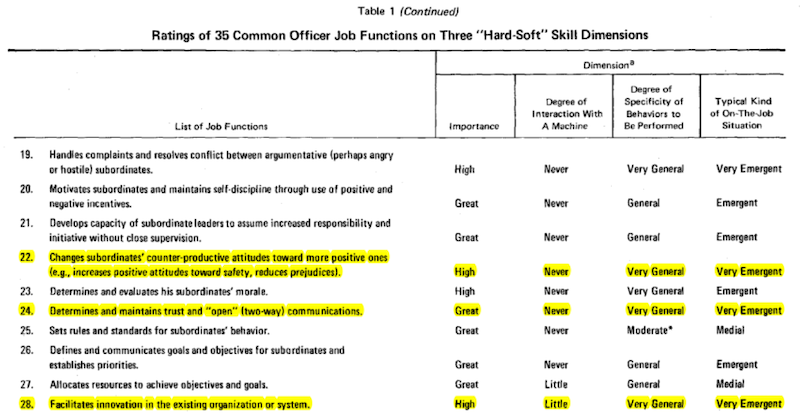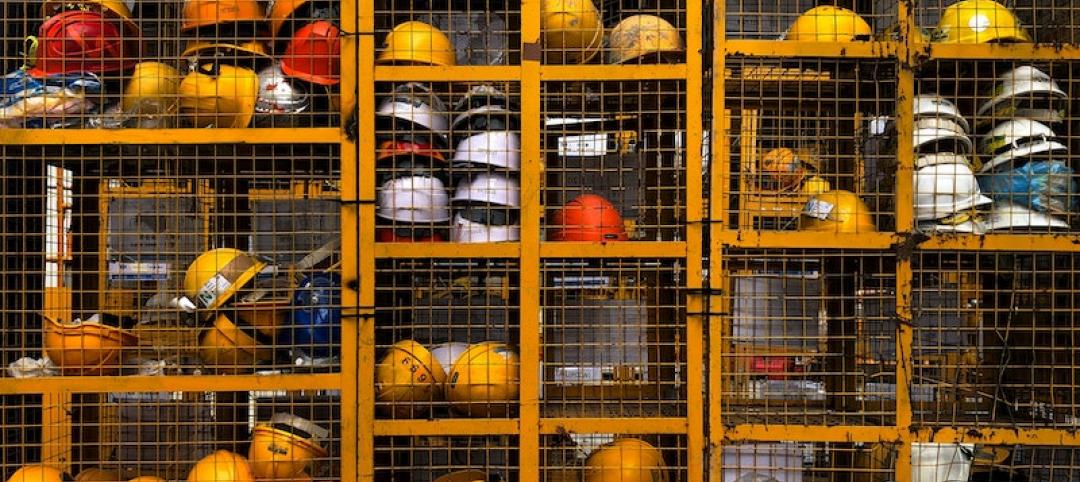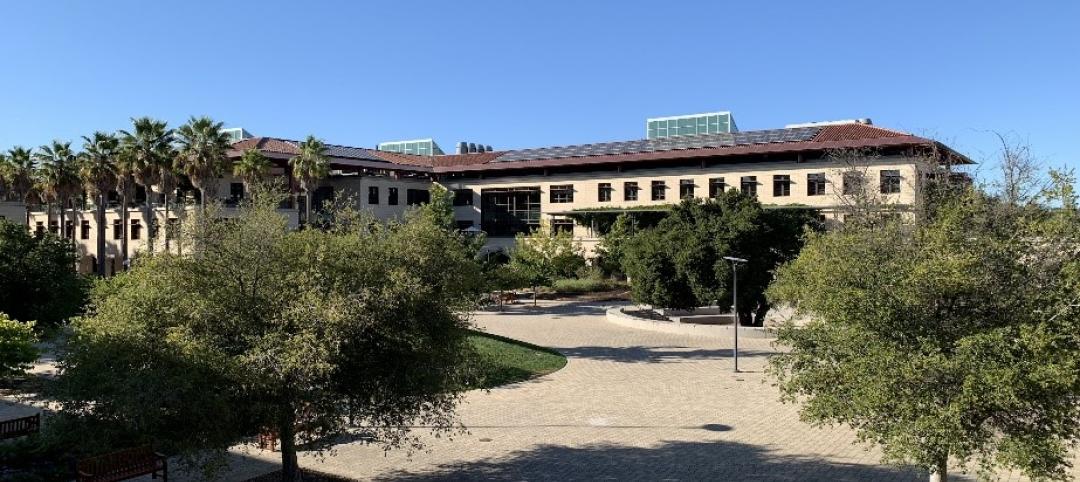What does it take to do your job? It’s easy to name the “hard skills,” the ones that use physical tools to make physical things. But that doesn’t tell the whole story. Critical parts of our jobs, the parts that deal with people, rely on communication as the tool - these are our “soft skills.” Soft skills allow us to navigate conflict, establish trust, and find novel solutions. They are the key to increasing productivity in the AECO industry, a sorely needed change considering the sector’s annual productivity growth has only increased 1% over the past 20 years despite accounting for 13% of the world’s GDP. This equates to $1.6 trillion of potential value, enough to meet half of the world’s infrastructure needs.
The concept of “soft skills” is hardly new. In 1959, the US Army created regulations called “Systems Engineering of Training” (CON Reg 350-100-1) to train officers in skills that involve little to no interaction with machines. Following this, in 1974 Dr. Paul G. Whitmore and John P. Fry co-authored a fascinating report called “What are Soft Skills?” They assessed thirty-five common officer job functions; I will focus on three that were considered very emergent at the time of the report. I would argue that they are still emerging across industries today. Those job functions are:
— Change subordinates’ counter-productive attitudes toward more positive ones.
— Determine and maintain trust and “open” (two-way) communication
— Facilitate innovation in the existing organization or system
 1974 US Army report called “What Are Soft Skills?” The highlighted job functions are identified as “Very Emergent” in the report
1974 US Army report called “What Are Soft Skills?” The highlighted job functions are identified as “Very Emergent” in the report
Change counter-productive attitudes toward more positive ones
Institutional rivalries in the AECO industry - architects vs. structural engineers, general contractors vs. architects - are some of the most counter-productive attitudes I encounter. These frustrations and grievances put up barriers that prevent active problem solving. They also have a measurable cost. Dr. Julie Brockman of Michigan State University quantified the cost of arguments in the construction industry in a report funded by the Center for Construction Research and Training (CPWR). The report determined that episodes of “interpersonal conflict” on construction job sites averaged about $11,000 in labor cost per conflict. Surprisingly (or unsurprisingly), the CPWR noted that most arguments weren’t typical labor conflicts or jurisdictional disputes - they were mostly arguments “over the best way to approach a task.” In other words, counter-productive attitudes.
One of my main goals as a BIM consultant is to introduce new methods of collaboration, such as integrated project delivery (IPD), that help avoid these situations. IPD is a project delivery method that “integrates people, systems, business structures and practices into a process that collaboratively harnesses the talents and insights of all participants to optimize project results.” I apply IPD concepts on all of my projects regardless of the contract. I prefer to have the site superintendent, designers, and the modeler and foreman for each trade present at every coordination meeting to expedite clash resolution. When people take ownership of their decisions prior to construction, there is a shared sense of trust and understanding that this is the path forward.
The VIATechnik team attending a lunch and learn on soft skills. Photo Credit: Jesse Huynh, VIATechnik
Determine and Maintain Trust and “Open” (Two-Way) Communication
In my 10+ years in the AECO industry I have seen a concerning trend: people find mistakes and establish that as the main focus instead of trying to find the right path forward. I have seen people curse and shame others in particularly stressful situations on construction sites, shouting louder than anyone else to get their way. This is a familiar scene to all of us. So how do we deal with people when their actions, inactions, or circumstances impact the project?
Non-violent communication is critical in these situations. It is a communication method, popularized by the late Dr. Marshall Rosenberg, that helps people be more self-aware of the words they use while listening to the intent behind the words others use. Think of someone who is making your life less than wonderful at work right now - why are they frustrating you? You might say things like, “This person is lazy. This person thinks the job I’ve assigned them (solving clashes on time) isn’t important. They’re doing this deliberately.” However, looking closer we see that these are evaluations and judgements, not concrete observations. The only such observation here is that this person is not solving the clashes assigned to him. So instead, you might say: “There must be a reason this task isn’t being completed. I should find out what it is.” The next step is to call this to his attention and offer a solution, such as meeting with him offline to help him catch up with the rest of the group. By using these methods, we can ensure a durable trust and mutual respect among all team members.
VIATechnik team members using innovative technology. Photo Credit: Jesse Huynh, VIATechnik
Facilitate Innovation in the Existing Organization or System
Labor shortages in the construction industry are an on-going issue; as a result, we are becoming increasingly dependent on innovation for success. Unfortunately, construction has a long record of the opposite - it is the least digitized industry next to agriculture. It is crucial, then, that those we do hire have perspectives different from our own, although this isn’t the status quo.
A recent episode of the Shared Pains Podcast called “Diversity, But Why?” discusses some of the more systemic issues related to construction and diversity. People get stuck in their ways, but differing perspectives can be the missing link to innovative problem-solving. We often don’t realize how heavily our decisions are influenced by our learned behavior, unconscious biases, background, and personal experiences. In other words, we don’t realize what, or whom, we’re leaving out of a decision. Some of the largest construction issues to date are being solved by women and people of color. It is important to listen to all of the people offering solutions; their perspectives might teach you something that you might not have considered.
Finding Your Soft Skills
If you still aren’t convinced, consider this: a new study from Boston College, Harvard University, and the University of Michigan found that soft skills training delivers a 250 percent return on investment. At VIATechnik, we understand the importance of helping each team member find and develop their soft skills. Prior to joining the company, new hires are asked to take the Gallup Strengthsfinder Test. Once a year, the group attends a summer retreat to learn about each other’s personality traits and find ways to effectively work with each other. Each of us also has a Professional Development Coaching Workbook that allows 30, 60, and 90 day check-ins with our studio leads to assess our progress, in addition to an annual review. It is a huge part of our company culture.
When it comes to finding new hires with soft skills, the veterans outreach program through the Associated General Contractors of America can help. Soft skills are still taught in the US Army through The Basic Leader Course (BLC). You can learn more about veteran recruiting through the AGC website.
Strong soft skills are key to the success of the construction industry. If you are interested in learning more about soft skills first-hand, I highly recommend events hosted by Ripple Intent. They have monthly meetings in Denver, Portland, and Phoenix. They also offer yearly symposiums for people out of town. I have attended several of these events and considered each a rewarding experience in their own right.
I hope that this article has encouraged you to find your soft skills. If you are already familiar with your soft skills, I hope this article encouraged you to reach out to others and help them on their journey. My hope is that, like our veterans, we can learn from our past experiences and the experiences of others to push forward, work smarter, and become more self-aware.
More from Author
VIATechnik | Jul 17, 2023
Unlocking the power of digital twins: Maximizing success with OKRs
To effectively capitalize on digital twin technology, owners can align their efforts using objectives and key results (OKRs).
VIATechnik | Apr 19, 2022
VDC maturity and the key to driving better, more predictable outcomes
While more stakeholders across the AEC value chain embrace the concept of virtual design and construction, what is driving the vastly different results that organizations achieve? The answer lies within an assessment of VDC maturity.
VIATechnik | Sep 28, 2021
Getting diversity, equity, and inclusion going in AEC firms
As a professional services organization built on attracting the best and brightest talent, VIATechnik relies on finding new ways to do just that. Here are some tips that we’ve learned through our diversity, equity, and inclusion (DE&I) journey.
VIATechnik | Mar 2, 2021
Retail expectations vs reality in 2021
The reality of retail success in 2021 is proving to be based on a formula of mixing digital with the physical in pursuit of convenience.
VIATechnik | Nov 23, 2020
Agility is the game-changer in the post-COVID world
There has been a fundamental shift in how human beings live, work, and play. The built environment must shift in response.
VIATechnik | Nov 17, 2020
The coming automation of retail brick and mortar
The demise of retail brick and mortar is overstated and unwarranted - we see digital transformation offering brick and mortar a path forward for the physical store.
VIATechnik | Oct 1, 2020
Smart buildings stand on good data
The coming disruption of owning and operating a building and how to stay ahead through BIM.
VIATechnik | Jul 15, 2020
Building pride: A Reflection of LGBTQ rights in construction
The Supreme Court did its job. The rest is up to us.
VIATechnik | May 8, 2020
Data centers as a service: The next big opportunity for design teams
As data centers compete to process more data with lower latency, the AEC industry is ideally positioned to develop design standards that ensure long-term flexibility.
VIATechnik | Mar 17, 2020
A tree grows in Stanford: CIFE, VDC, and where it all began
As our industry adopts VDC as standard practice, it is important to remember where these ideas began and continue to emanate from today.














